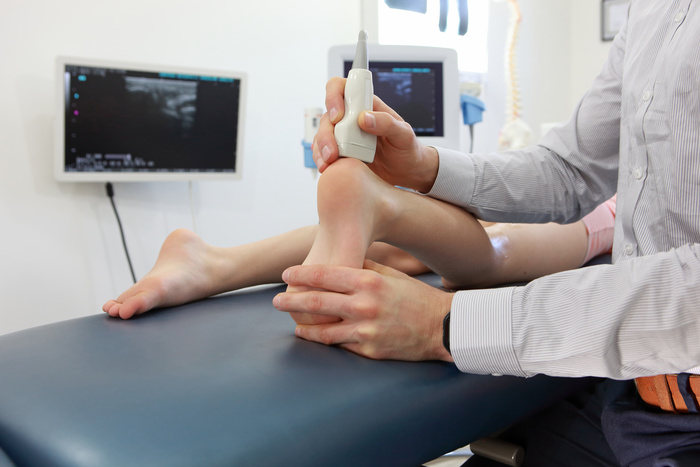When it comes to diagnosing foot and ankle injuries, traditional methods such as X-rays and MRIs have been the go-to options for many years. However, with advancements in medical technology, a new method called diagnostic ultrasound has emerged and is becoming increasingly popular in the field of podiatry. This non-invasive and painless procedure uses high-frequency sound waves to produce images of the soft tissues and structures of the foot and ankle. In this blog post, we will dive into the world of diagnostic ultrasound for foot and ankle injuries and explore its benefits, limitations, and applications.
The Basics of Diagnostic Ultrasound
Diagnostic ultrasound, also known as sonography, is a medical imaging technique that uses sound waves to produce real-time images of the inside of the body. These sound waves are emitted from a small handheld device called a transducer, which is placed on the skin over the area being examined. The sound waves travel through the body and bounce back, producing images that are captured and displayed on a screen.
One of the main advantages of diagnostic ultrasound is its ability to produce images in real time, allowing doctors to see the movement and function of the structures being examined. This is especially beneficial for foot and ankle injuries as it can capture images while the patient is standing, walking, or performing other movements.
The Benefits of Diagnostic Ultrasound for Foot and Ankle Injuries
1. Non-Invasive: Unlike other imaging techniques such as X-rays and MRIs, diagnostic ultrasound does not involve any radiation or injections, making it a safe and painless option for patients.
2. Quick and Convenient: Diagnostic ultrasound is a relatively quick procedure that can be performed in a doctor’s office, without the need for a hospital visit or specialized equipment.
3. Cost-Effective: Compared to other imaging methods, diagnostic ultrasound is a more cost-effective option, making it accessible to a wider range of patients.
4. Accurate Diagnosis: Diagnostic ultrasound produces high-quality images of the soft tissues and structures of the foot and ankle, allowing for a more accurate diagnosis of injuries and conditions.
5. Real-Time Imaging: As mentioned earlier, diagnostic ultrasound provides real-time images, allowing doctors to see the movement and function of the structures being examined, which is crucial for foot and ankle injuries.
The Limitations of Diagnostic Ultrasound for Foot and Ankle Injuries
While diagnostic ultrasound has many benefits, it also has some limitations that should be considered.
1. Limited Visualization of Bones: It is not as effective as X-rays or MRIs in visualizing bones, making it less useful for injuries that involve bone fractures or breaks.
2. Operator Dependent: The quality of the images produced by diagnostic ultrasound can vary depending on the experience and skill of the operator. This is why it is essential to go to a reputable and experienced podiatrist for this procedure.
3. Limited Availability: Not all podiatry offices have the equipment and expertise to perform diagnostic ultrasound. This can limit access to this imaging method for some patients.
Applications of Diagnostic Ultrasound for Foot and Ankle Injuries
1. Soft Tissue Injuries: This procedure is highly effective in diagnosing soft tissue injuries such as ligament tears, tendonitis, and sprains. It can also help identify the extent of the injury and guide treatment options.
2. Nerve Entrapment: It can be used to identify nerve entrapment syndromes such as Morton’s neuroma, tarsal tunnel syndrome, and plantar fasciitis.
3. Arthritis: In cases of foot and ankle arthritis, diagnostic ultrasound can help identify the type and severity of the condition, allowing for proper treatment planning.
4. Foreign Objects: If a foreign object, such as a splinter or piece of glass, is suspected to be lodged in the foot or ankle, a diagnostic ultrasound can accurately locate its position and aid in its removal.
Contact Advanced Podiatry Specialists
Diagnostic ultrasound is a safe, quick, and cost-effective imaging technique that has proven to be valuable in the diagnosis of foot and ankle injuries. While it has its limitations, its benefits far outweigh them, making it a valuable tool for podiatrists. If you are experiencing any foot or ankle pain or suspect an injury, consider scheduling an appointment with Advanced Podiatry Specialists in Ocala, FL. Our team of experienced and skilled podiatrists utilizes diagnostic ultrasound and other advanced techniques to provide accurate diagnoses and personalized treatment plans. To schedule an appointment, contact us at (352) 351-4444.



